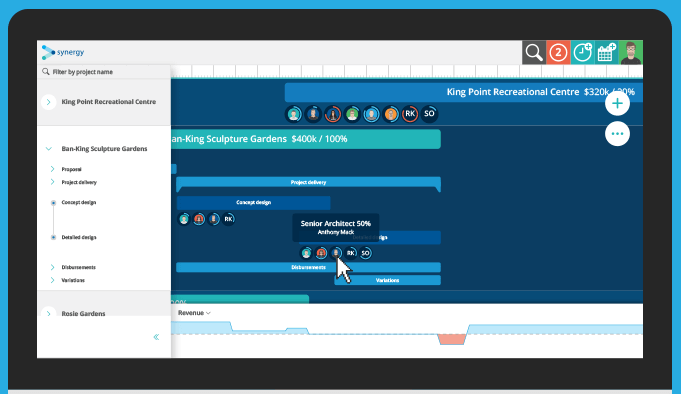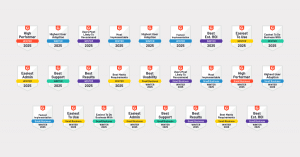It’s true that in many architectural, engineering and construction design firms’ staff alternate between states of overwork and underutilisation. Neither situation is ideal — for the practice, employee or client. In the perfect world, all staff would be busy to their capacity with no idle time.
Large and small AEC practice alike, it’s vital to ensure your team is allocated to projects adequately both now and in the future. To do this, built environment design businesses need forecasting and resourcing capabilities.
What is forecasting and resourcing?
Forecasting and resourcing go hand-in-hand to help AEC businesses answer two important questions:
- Do we have enough business in the pipeline to run the practice and pay the staff?
- Do we have enough of the right staff to deliver the projects we expect to win?
Forecasting and resourcing helps you interpret your historical work, your current team composition, and the work you have coming in the future. It gives project managers confidence in delivering the projects for the clients.
How forecasting and resourcing works
Revenue forecast
In order to ensure balanced cash flow, directors, practice managers and project managers need to see a forecast of revenue for future projects. At an early planning stage, this is typically estimated based on the proposed project fee and the practice’s primary rates. This is a ‘rough’ calculation of the number of hours each different role is expected to work to complete the project in a given timeframe.
Once you’re ready to be more precise — either the proposed project opportunity requires additional labour analysis, you’ve won the project, or you’re close to winning it and need to be more specific — you need to create a work breakdown of the project phases, stages and tasks, create a budget for the project stages, and assign invoice values to each stage that you expect to bill during the project.
At this point, your budget can be based on the types of roles you’ll have for those project stages — the specific people can be assigned to tasks in the resource planning stage. Which roles you need, and at which level of utilisation, depends on the nature of the work and the project timeline — a shorter timeline means more people and/or higher individual utilisation, a longer project timeline means fewer people spread out and possibly at lower individual utilisation.
Now that you have a project timeline and have determined the fees you intend to invoice, you can set up your detailed revenue forecast. During the planning stage of a project, your revenue forecast might be a simplification, simply splitting the fee across a number of months. There’s also the reality with design and construction projects that start and end dates will ebb and flow, and even the project size can change during the whole lifecycle of the project, being able to adjust these quickly and see how that affects capacity requirements is a significant benefit.
Once the project is active, however, increased financial accuracy is required and your project managers will want to specify exactly how much will be invoiced from month to month.
Resource planning and allocation
Once you have a forecast of the project revenue — based on a detailed work breakdown and budget — you’ll have a good forecast of capacity requirements or issues. Assuming you have enough of the right staff to deliver the project in that timeframe, you now have to allocate your staff to the project. This is called resource planning and is also where an individual’s utilisation comes into it. If, for example, you only have one person who is BIM trained and your project has heavy BIM demands, that person is likely to be overutilised (this is an extreme hypothetical, of course — who would do that?). Your capacity to delivery a project depends on having the right balance of skills to meet the project requirements.
If you don’t have the capacity to deliver a particular project, a resource forecast highlights this early and you can plan to either hire the right resources, bring in contract workers for a set time, or outsource part of the project. Equally, the revenue and resource forecast tells you if you have excess capacity compared to the jobs in your pipeline — your options here are either to win more business or lay people off.
Best guess
A forecast for revenue and resourcing is a ‘best guess’ at varying levels of sophistication — for example, you might write it all out on a napkin (low sophistication, low accuracy, quick), spend hours working it all out in a series of spreadsheets (medium sophistication, error-prone, laborious and time consuming), or use a cloud forecasting and resourcing application that does all the complex calculations in the background (high sophistication, high accuracy, flexible, fast).
Whatever your approach, it’s important to remember that any forecast of revenue and resources is only as good as the data you put into it — the more accurate you make it, the better the outcome.
Find out more about Synergy advanced forecasting and resource planning for architecture, engineering and construction design businesses and projects.


